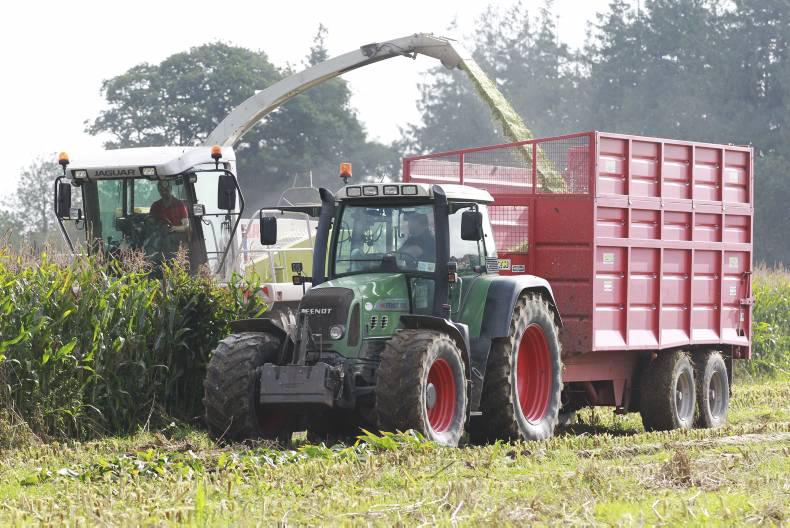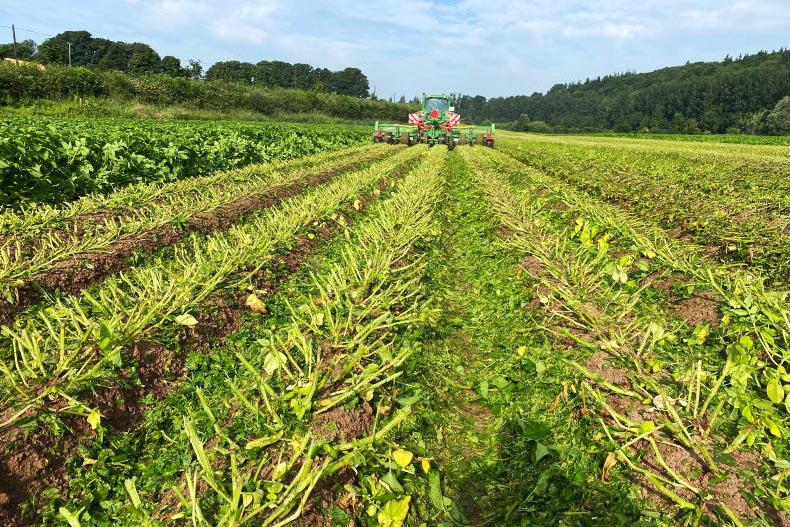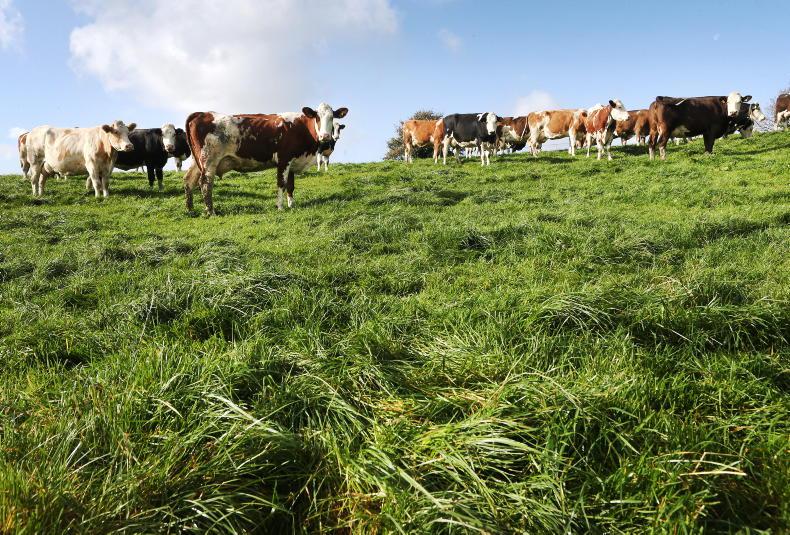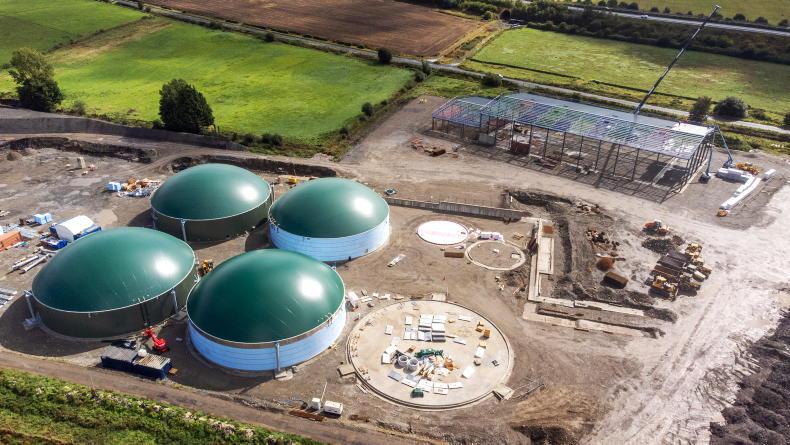With the maize harvest season just around the corner, some farmers may be considering purchasing maize from the field in the coming weeks. At the UCD Lyons Estate Research Farm, we set out to explore its potential at grass in mid- to late-lactation in a short-term experiment. In a herd with genetic merit to respond to supplementation at grass, can high-quality forage maize replace concentrate supplementation in mid- to late-lactation?
Forage maize at grass
Quality forage production per hectare, particularly for dairy farmers with a fixed land bank, is key to support above-average stocking rates.
Forage maize may have an important role to play to maximise the overall forage production per hectare to meet feed demands either through an outside block of land or in partnership with tillage farmers. In this capacity, Food Wise 2025 has highlighted the requirement to increase production of forage maize to meet anticipated demand for forage and nutrient requirements from the dairy sector.
Forage maize is more commonly recognised in dairying as an energy source as part of a total mixed ration (TMR) for winter milk production and in spring-calving herds in early lactation for those with high grass demand for the first rotation. In the post-quota era, where drying cows off early for quota reasons is no longer a concern, maize silage inclusion in late lactation could offer good value for money to extend lactation and boost milk quality.
UCD research
The cows were selected from the UCD Lyons Estate commercial herd (EBI = €154; milk = €53; fertility = €70) and were on average 101 days in milk when the trial started.
Cows were offered 4kg DM of a commercial concentrate versus 4kg DM of a high-quality forage maize at grass. The forage maize variety (P7631) used in the experiment was grown on site in 2013 under degradable mulch film with potential for high starch content.
The commercial concentrate as a result was formulated to have a high starch content to use as a comparison. The concentrate, forage maize and pasture chemical composition are detailed in Table 1.

In summary, the forage maize was 37% DM and 34% starch, the concentrate was 38% starch and 16% CP. The grazed grass offered was on average 18% DM, 18% CP and 87% OMD. It is important to note that a balancer was not offered to the maize-supplemented cows as we wanted to investigate supplementation type.
Results
The cows offered forage maize yielded significantly higher kilos of milk per day +2.3kg/d compared with the concentrate group with marginally higher milk solids due to the higher yield.
The maize supplemented group had a lower fat and protein percentage compared with the concentrate group. This demonstrates the requirement for a balancer in maize-supplemented cows at grass in mid- to late-lactation if farmers want to maximize milk solids production, as the protein content of the grass is not as high as earlier in the grazing season.
Interestingly, the maize-supplemented cows had an increase of almost 0.3 in body condition score (BCS) in the eight-week period, which may be important for herds looking to increase cow condition in late lactation
Economic comparison
The base price to purchase 30% DM and 30% starch forage maize is about €55/t fresh weight (FW), excluding delivery. The maize used in this trial was 37% DM and 34% starch, so it should be valued higher than the base value at €65/t FW.
The current range for 16% CP concentrate is €230/t to €280/t, depending on quality. In this trial, the cow consumes 4kg dairy nut/day at an average price of €255/t = €1.02/day, which yields 1.69kg MS/d. In comparison, a cow consumes 4kg DM of a 37% DM maize silage = 10.5kg FW per day atan average price of of €60/t = €0.63/d, which yields 1.75kg MS/d.
Forage maize quality is key and needs to be at least 30% DM, 30% starch. As quantity and quality of forage maize can fluctuate from year to year, it is crucial when purchasing to take into account not only yield, but also quality by getting maize tested.
Forage maize 2015
2013 and 2014 were excellent maize-growing years. However, a reduction in yield is expected this year based on average June temperatures. Maize sown early under film should still give a result of 30% DM and 28% to 30% starch depending on variety choice, however.
The authors would like to thank Enterprise Ireland and Samco Agricultural Manufacturing, for the funding of this project.
Cows supplemented with forage maize yielded +2.3 kg/d milk compared with those supplemented with concentrate. A balancer is required for maize supplemented cows at grass in mid- to late-lactation if farmers want to maximise milk solids production, as the protein content of the grass is not as high as earlier in the grazing season.Maize silage quality is crucial. If purchasing 2015 maize silage, get it tested and aim for 30% DM and 30% starch.
Read more
Focus: Winter feed 2015
With the maize harvest season just around the corner, some farmers may be considering purchasing maize from the field in the coming weeks. At the UCD Lyons Estate Research Farm, we set out to explore its potential at grass in mid- to late-lactation in a short-term experiment. In a herd with genetic merit to respond to supplementation at grass, can high-quality forage maize replace concentrate supplementation in mid- to late-lactation?
Forage maize at grass
Quality forage production per hectare, particularly for dairy farmers with a fixed land bank, is key to support above-average stocking rates.
Forage maize may have an important role to play to maximise the overall forage production per hectare to meet feed demands either through an outside block of land or in partnership with tillage farmers. In this capacity, Food Wise 2025 has highlighted the requirement to increase production of forage maize to meet anticipated demand for forage and nutrient requirements from the dairy sector.
Forage maize is more commonly recognised in dairying as an energy source as part of a total mixed ration (TMR) for winter milk production and in spring-calving herds in early lactation for those with high grass demand for the first rotation. In the post-quota era, where drying cows off early for quota reasons is no longer a concern, maize silage inclusion in late lactation could offer good value for money to extend lactation and boost milk quality.
UCD research
The cows were selected from the UCD Lyons Estate commercial herd (EBI = €154; milk = €53; fertility = €70) and were on average 101 days in milk when the trial started.
Cows were offered 4kg DM of a commercial concentrate versus 4kg DM of a high-quality forage maize at grass. The forage maize variety (P7631) used in the experiment was grown on site in 2013 under degradable mulch film with potential for high starch content.
The commercial concentrate as a result was formulated to have a high starch content to use as a comparison. The concentrate, forage maize and pasture chemical composition are detailed in Table 1.

In summary, the forage maize was 37% DM and 34% starch, the concentrate was 38% starch and 16% CP. The grazed grass offered was on average 18% DM, 18% CP and 87% OMD. It is important to note that a balancer was not offered to the maize-supplemented cows as we wanted to investigate supplementation type.
Results
The cows offered forage maize yielded significantly higher kilos of milk per day +2.3kg/d compared with the concentrate group with marginally higher milk solids due to the higher yield.
The maize supplemented group had a lower fat and protein percentage compared with the concentrate group. This demonstrates the requirement for a balancer in maize-supplemented cows at grass in mid- to late-lactation if farmers want to maximize milk solids production, as the protein content of the grass is not as high as earlier in the grazing season.
Interestingly, the maize-supplemented cows had an increase of almost 0.3 in body condition score (BCS) in the eight-week period, which may be important for herds looking to increase cow condition in late lactation
Economic comparison
The base price to purchase 30% DM and 30% starch forage maize is about €55/t fresh weight (FW), excluding delivery. The maize used in this trial was 37% DM and 34% starch, so it should be valued higher than the base value at €65/t FW.
The current range for 16% CP concentrate is €230/t to €280/t, depending on quality. In this trial, the cow consumes 4kg dairy nut/day at an average price of €255/t = €1.02/day, which yields 1.69kg MS/d. In comparison, a cow consumes 4kg DM of a 37% DM maize silage = 10.5kg FW per day atan average price of of €60/t = €0.63/d, which yields 1.75kg MS/d.
Forage maize quality is key and needs to be at least 30% DM, 30% starch. As quantity and quality of forage maize can fluctuate from year to year, it is crucial when purchasing to take into account not only yield, but also quality by getting maize tested.
Forage maize 2015
2013 and 2014 were excellent maize-growing years. However, a reduction in yield is expected this year based on average June temperatures. Maize sown early under film should still give a result of 30% DM and 28% to 30% starch depending on variety choice, however.
The authors would like to thank Enterprise Ireland and Samco Agricultural Manufacturing, for the funding of this project.
Cows supplemented with forage maize yielded +2.3 kg/d milk compared with those supplemented with concentrate. A balancer is required for maize supplemented cows at grass in mid- to late-lactation if farmers want to maximise milk solids production, as the protein content of the grass is not as high as earlier in the grazing season.Maize silage quality is crucial. If purchasing 2015 maize silage, get it tested and aim for 30% DM and 30% starch.
Read more
Focus: Winter feed 2015














SHARING OPTIONS